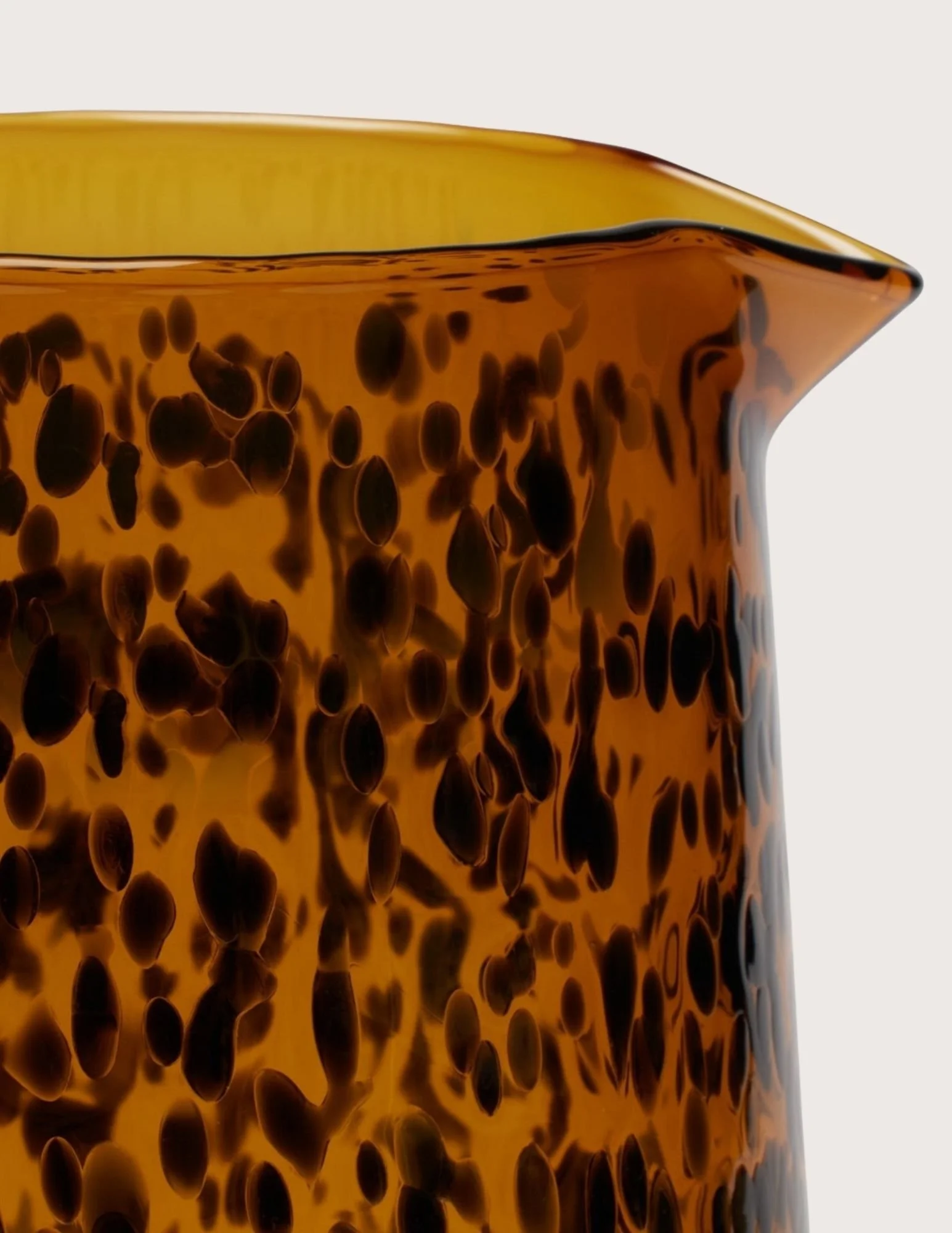 Image 1 of 3
Image 1 of 3

 Image 2 of 3
Image 2 of 3

 Image 3 of 3
Image 3 of 3




Eversley Wine Glass Set of 2
Details
Modern and understated, the Eversley Wine Glass Set elevates everyday drinkware and tablescapes in its muted purple and amber hues. Handblown glass creates a unique elegance, and these footed pieces are sure to add warmth to your next gathering. Pair this set with other pieces from the Eversley Collection for a complete look.
Editors' Note
The Eversley Collection is named for pioneering Black abstractionist artist, Fred Eversley. A Brooklyn native, born in 1941, his parents were Frederick W. Eversley Jr., a civil engineer who later built a multi-million dollar construction company, and Beatrice Syphax Eversley, a descendent of Maria Carter Syphax, a woman born into slavery and descended from Martha Washington through her father, the slave-owner George Washington Parke Custis. Manumitted by her father at 23, Maria Carter Syphax is remembered as the matriarch of the extremely accomplished and prominent Syphax family of Washington D.C., whose accomplishments range from Reconstruction Era appointments in the Virginia General Assembly to chairmanships of the Congressional House Ethics Committee, and the attempted impeachment of Ronald Reagan. Eversley himself followed in his father's footsteps with an early interest in science. He built a workshop in his childhood home, filled with radio and photography equipment from his grandfather, which he used to conduct experiments that he read about in magazines. Among them was an experiment first conducted by Galileo concerning parabola. Eversley's successful recreation of the process sparked a lifelong interest in parabola that would greatly influence his later work as an artist.
Details
Modern and understated, the Eversley Wine Glass Set elevates everyday drinkware and tablescapes in its muted purple and amber hues. Handblown glass creates a unique elegance, and these footed pieces are sure to add warmth to your next gathering. Pair this set with other pieces from the Eversley Collection for a complete look.
Editors' Note
The Eversley Collection is named for pioneering Black abstractionist artist, Fred Eversley. A Brooklyn native, born in 1941, his parents were Frederick W. Eversley Jr., a civil engineer who later built a multi-million dollar construction company, and Beatrice Syphax Eversley, a descendent of Maria Carter Syphax, a woman born into slavery and descended from Martha Washington through her father, the slave-owner George Washington Parke Custis. Manumitted by her father at 23, Maria Carter Syphax is remembered as the matriarch of the extremely accomplished and prominent Syphax family of Washington D.C., whose accomplishments range from Reconstruction Era appointments in the Virginia General Assembly to chairmanships of the Congressional House Ethics Committee, and the attempted impeachment of Ronald Reagan. Eversley himself followed in his father's footsteps with an early interest in science. He built a workshop in his childhood home, filled with radio and photography equipment from his grandfather, which he used to conduct experiments that he read about in magazines. Among them was an experiment first conducted by Galileo concerning parabola. Eversley's successful recreation of the process sparked a lifelong interest in parabola that would greatly influence his later work as an artist.
Additional Details
Set of 2 wine glasses
Weight: 0.4 lbs
Opening Size: 2.5""
Material: Glass
Dimensions: 2.75" x 2.75" x 4.75"
Imported
Made to order
Ships within the continental U.S. in 7-10 business days















